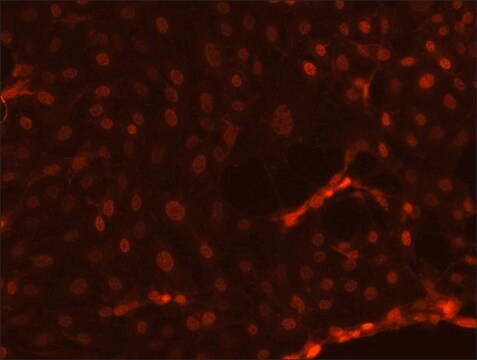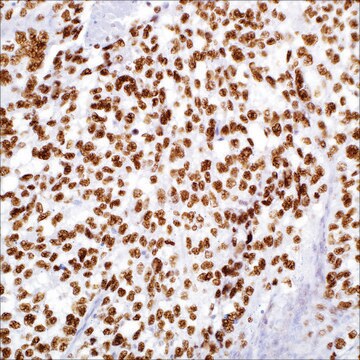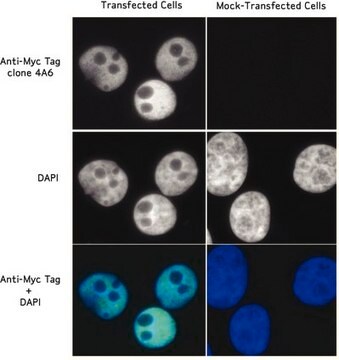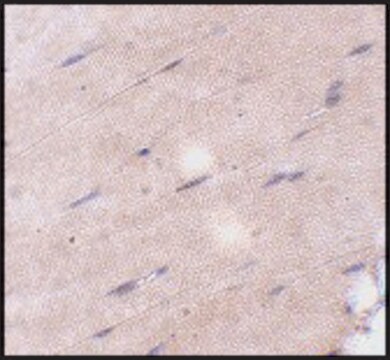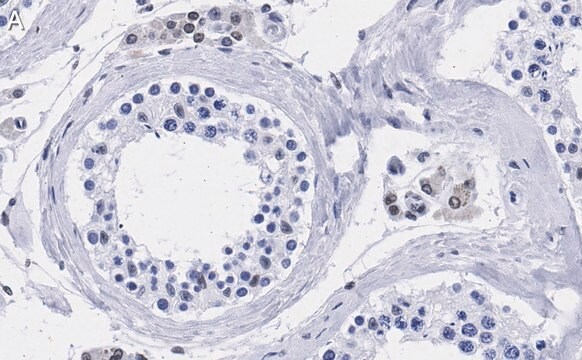SAB4200824
Anti-TFE3 antibody, Mouse monoclonal
clone TFE3-37, purified from hybridoma cell culture
Synonyme(s) :
Class E basic helix-loop-helix protein 33, Transcription factor E3, bHLHe33
About This Item
Produits recommandés
Source biologique
mouse
Forme d'anticorps
purified from hybridoma cell culture
Clone
TFE3-37, monoclonal
Forme
buffered aqueous solution
Poids mol.
60 kDa
Espèces réactives
human, mouse, bovine, rat, canine
Conditionnement
antibody small pack of 25 μL
Concentration
~1 mg/mL
Technique(s)
immunoblotting: 1.5-3 μg/mL using human A549 cells extract
Isotype
IgG1
Numéro d'accès UniProt
Conditions d'expédition
dry ice
Température de stockage
−20°C
Modification post-traductionnelle de la cible
unmodified
Informations sur le gène
human ... TFE3(7030)
Description générale
TFE3 serve an important role in cell growth, cell proliferation, cellular adaptation to starvation and cellular response to ER stress. Under nutrient-rich conditions, TFE3 is located in the cytoplasm, and under starvation conditions or treatment with ER stressors, TFE3 rapidly translocates to the nuclear. In the nuclear localization, TFE3 mediates cellular adaptation to stress by simultaneously promoting lysosomal biogenesis, autophagy induction, as well as expression of critical mitochondrial and metabolic regulators. It been shown that TFE3 also participate in the transcriptional regulation of the innate immune response.
Pathogen infections promote TFE3 nuclear translocation, thus inducing In vivo expression of several cytokines and chemokines.
Application
Forme physique
Autres remarques
Clause de non-responsabilité
Code de la classe de stockage
10 - Combustible liquids
Classe de danger pour l'eau (WGK)
WGK 1
Point d'éclair (°F)
Not applicable
Point d'éclair (°C)
Not applicable
Faites votre choix parmi les versions les plus récentes :
Certificats d'analyse (COA)
Vous ne trouvez pas la bonne version ?
Si vous avez besoin d'une version particulière, vous pouvez rechercher un certificat spécifique par le numéro de lot.
Déjà en possession de ce produit ?
Retrouvez la documentation relative aux produits que vous avez récemment achetés dans la Bibliothèque de documents.
Notre équipe de scientifiques dispose d'une expérience dans tous les secteurs de la recherche, notamment en sciences de la vie, science des matériaux, synthèse chimique, chromatographie, analyse et dans de nombreux autres domaines..
Contacter notre Service technique